australian red bull ant Stock Photo Alamy

Red Bull ant, Myrmecia sp. photo Alexander Dudley photos at
The red bull ant ( Myrmecia gulosa ), also known as the giant bull ant or " hoppy joe ", is a species of bulldog ant from the genus Myrmecia. It is abundant throughout Eastern Australia. More Info Computer Vision Model Included

Giant Red Bull Ant Myrmecia gulosa
Bull ants are large, alert ants that can grow up to 40 mm They have characteristic large eyes and long, slender mandibles and a potent venom-loaded sting. They have superior vision, able to track and even follow intruders from a distance of 1 metre. Many species of bull ants have bright red or orange colours on the head or abdomen.
FileRed Bull Ant Sand.JPG Wikimedia Commons
ABOVE: The venom of Australian giant red bull ants (Myrmecia gulosa) contains a peptide that triggers hypersensitivity to pain in echidnas, one of the ant's primary predators. SAM ROBINSON . EDITOR'S CHOICE IN BIOCHEMISTRY. When University of Queensland molecular biologist Sam Robinson first broke down the venom of Australian giant red bull ants (Myrmecia gulosa), he was looking for.

Australian Red Bull Ant With Its Prey Victoria Australia Stock Photo Download Image Now iStock
Myrmecia pyriformis, also known as the bull ant [1] or inch ant, [2] is an Australian ant. Myrmecia pyriformis belongs to the genus Myrmecia. It is abundant in many major cities of Australia, but mostly spotted in the eastern states. The species is of a similar appearance to the Myrmecia forficata. [3]

The red bull ant (Myrmecia brevinoda) Ants, Red bull, Instagram
Myrmecia gulosa, the red bull ant, also known as the giant bull ant or " hoppy joe ", is a species of bulldog ant from the genus Myrmecia. It is abundant throughout Eastern Australia . Taxonomy
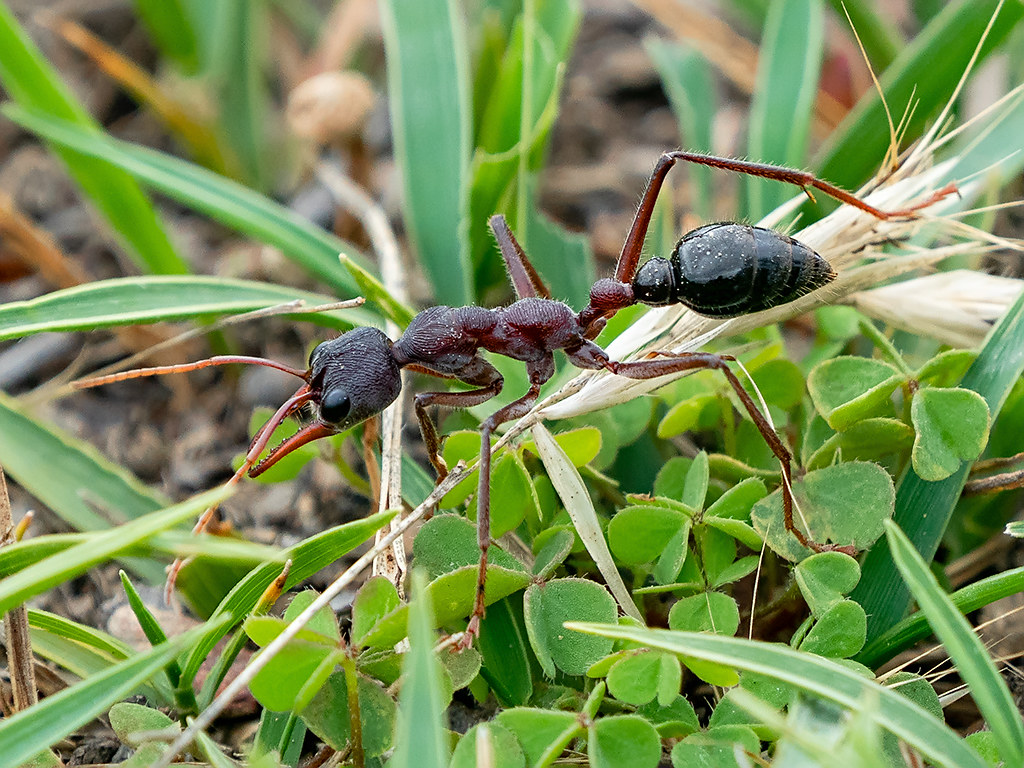
Red Bull Ant (Myrmecia gulosa) Wamboin, NSW, Australia. Flickr
Myrmecia nigriceps, also known as the black-headed bull ant, is a species of ant endemic to Australia.A member of the genus Myrmecia in the subfamily Myrmeciinae, it was first described by Austrian entomologist Gustav Mayr in 1862. These ants are large, varying from 19 to 23 millimetres (0.75 to 0.91 in) in length. However, colonies contain workers that are much smaller, usually half the size.
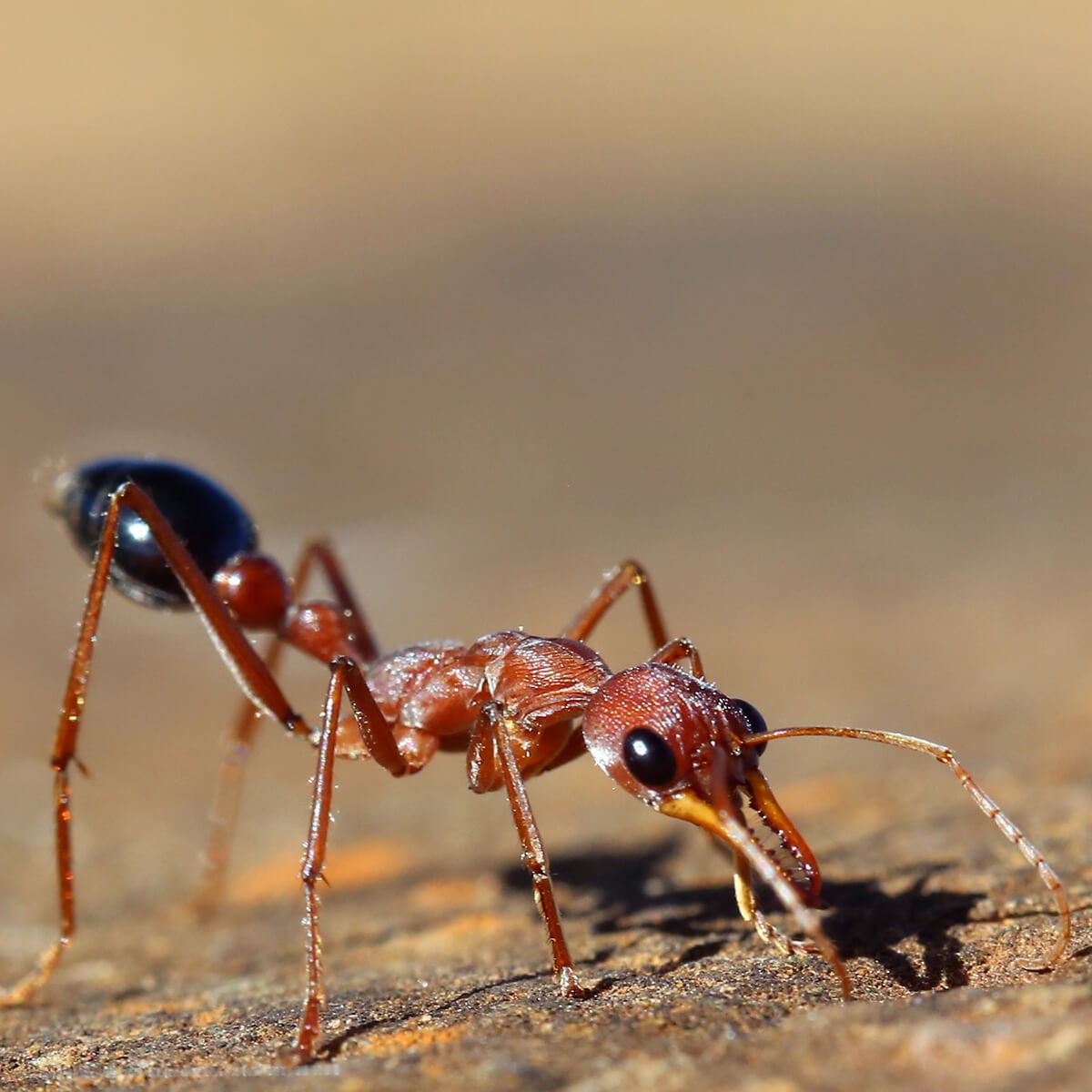
Bull Ants Lifecycle, Facts, Habits Fantastic Pest Control
polypeptidic ant venom, that of the giant red bull ant, Myrmecia gulosa. We reveal a suite of novel peptides with . a range of posttranslational modifications, including disulfide bond formation.

Australian Red Bull Ant With Its Prey Victoria Australia Stock Photo Download Image Now iStock
Abstract Ants (Hymenoptera: Formicidae) are diverse and ubiquitous, and their ability to sting is familiar to many of us. However, their venoms remain largely unstudied. We provide the first comprehensive characterization of a polypeptidic ant venom, that of the giant red bull ant, Myrmecia gulosa.
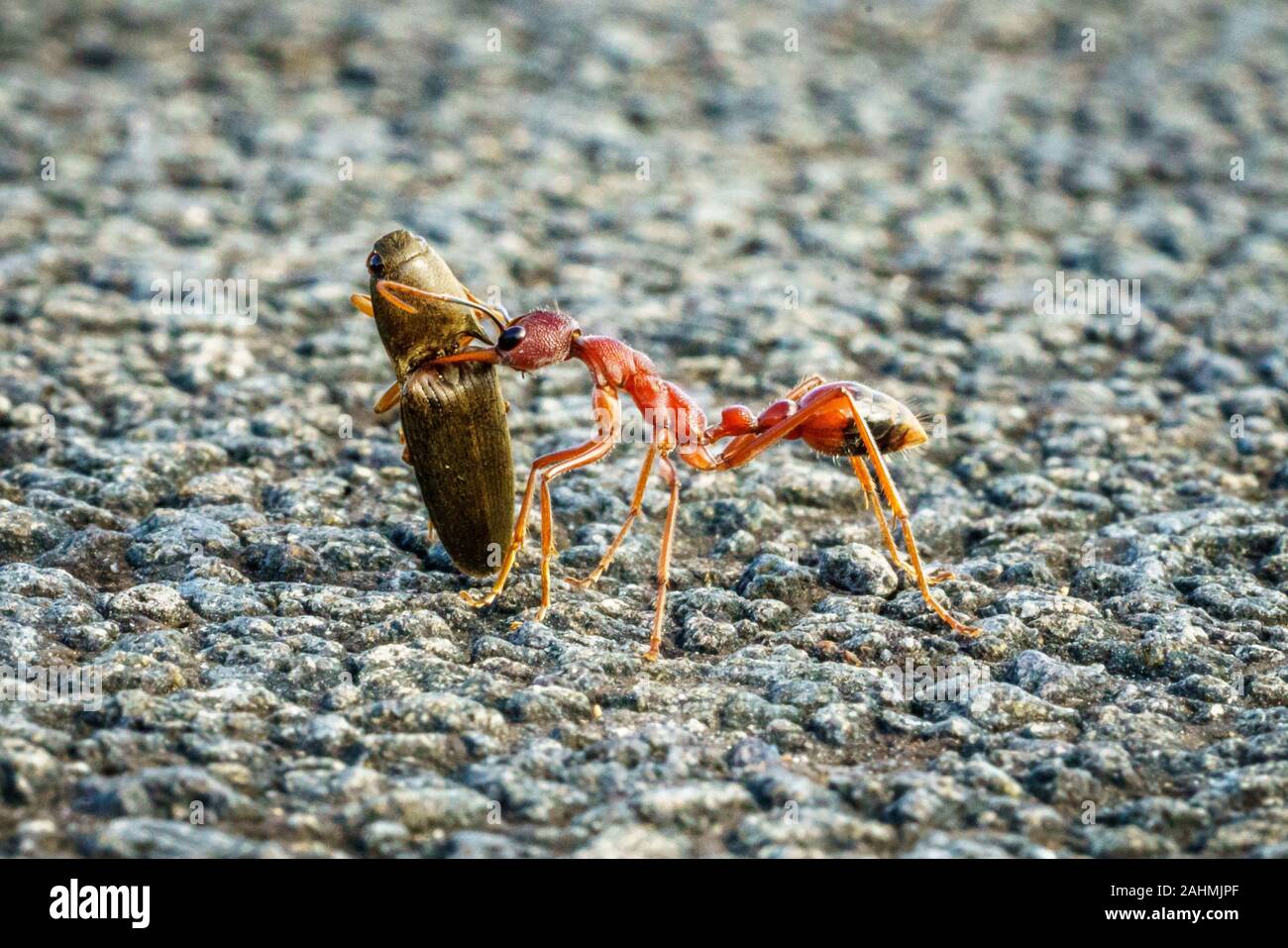
australian red bull ant Stock Photo Alamy
From Wikipedia, the free encyclopedia For other uses, see Myrmecia (disambiguation). Not to be confused with Myrmecina or Myrmica. Myrmecia is a genus of ants first established by Danish zoologist Johan Christian Fabricius in 1804. The genus is a member of the subfamily Myrmeciinae of the family Formicidae.

Red Bull Ant Red Bull Ant (Myrmecia gulosa), Myall Lakes N… Flickr
Bull ants are mostly large ants, characterised by long, lean bodies, big eyes and huge, powerful, forward-pointing mandibles that can inflict a painful bite. It's not, however, the bite that you need to be worried about - although it's certainly worth avoiding, particularly in the bigger species.

Red Bull Ant with Its Prey, Australia Stock Image Image of wallpaper, scenery 210341243
Worker size varies over a wide range (14 - 23 mm), exhibiting a bimodal distribution. M. gulosa queens are only slightly bigger than large workers, but have many more ovarioles (44 compared to 8-14 in workers; Dietemann et al. 2002). Retinue involving large and small workers around the fertile queen. Photo by Vincent Dietemann.

Red Bull Ant stock photo. Image of invertebrate, wildlife 276644780
A Comprehensive Portrait of the Venom of the Giant Red Bull Ant, Myrmecia gulosa, Reveals a Hyperdiverse Hymenopteran Toxin Gene Family Sci Adv. 2018 Sep 12;4 (9):eaau4640. doi: 10.1126/sciadv.aau4640. eCollection 2018 Sep. Authors
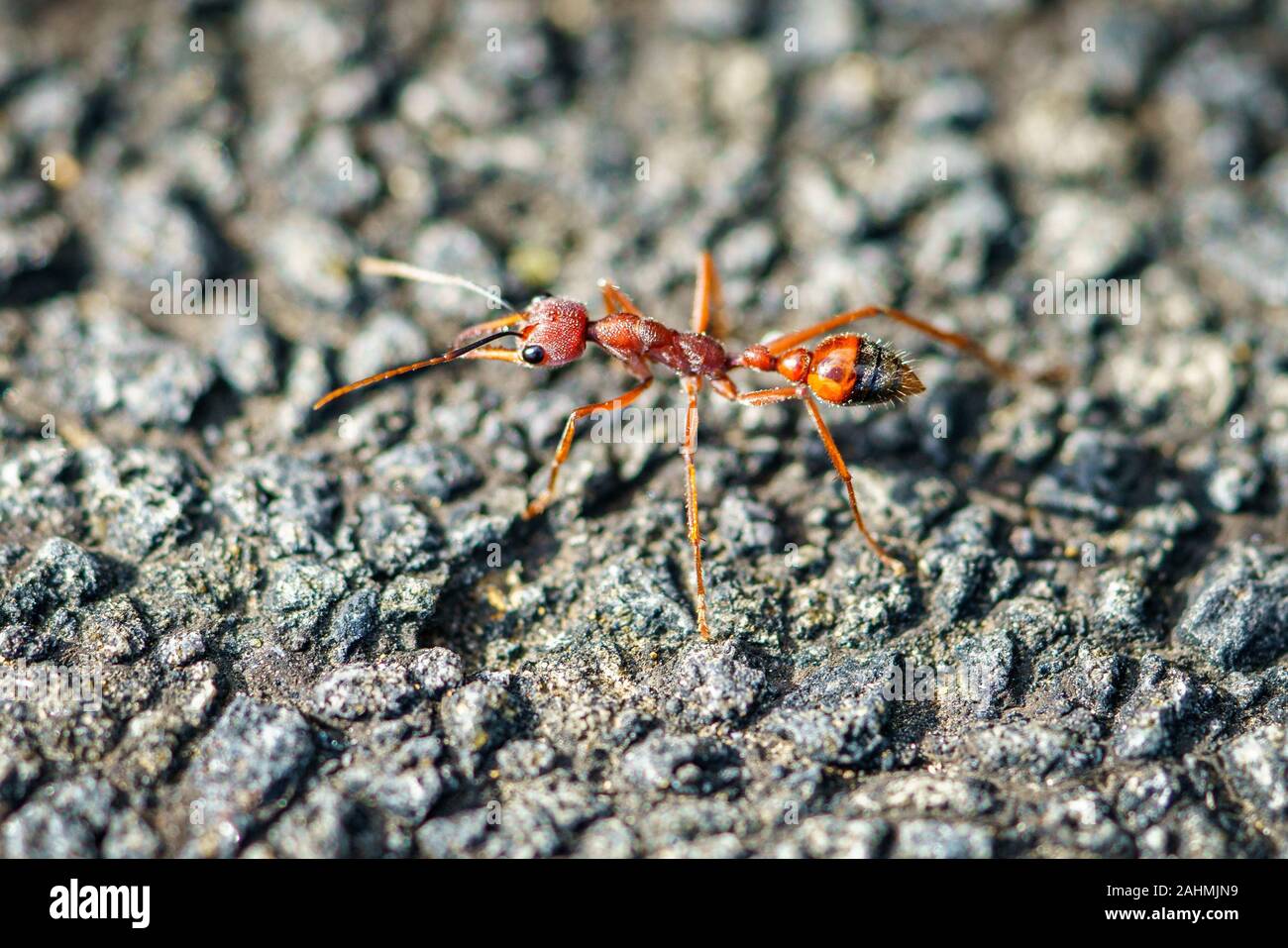
australian red bull ant Stock Photo Alamy
Subfamily Myrmeciinae This page contains pictures and information about Giant Red Bull Ants that we found in the Brisbane area, Queensland, Australia. Length 25mm Giant Red Bull Ant is also known as Giant Bull Ant. They are one of the largest in ants species. They have long, straight and powerful jaws and a potent sting.
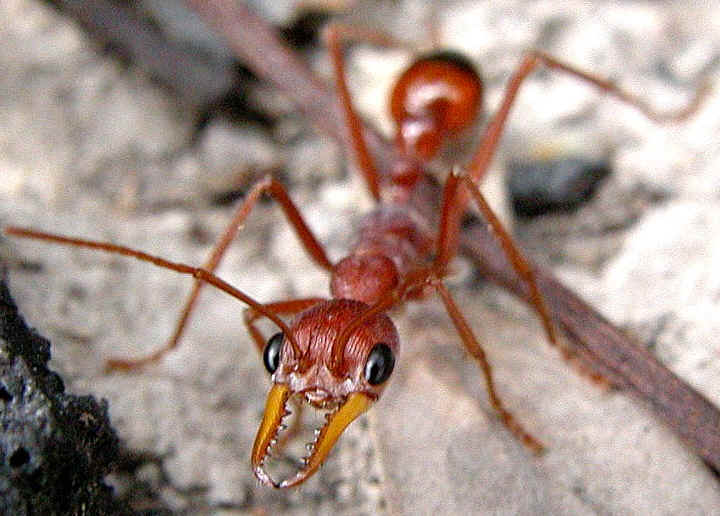
Giant Red Bull Ant Myrmecia gulosa
The head and thorax are typically coloured red-brown; the rear half of the abdomen is black and the mandibles brown-yellow. Adults characteristically possess the long, powerful serrated mandibles and a venom-laced sting capable of causing severe pain for a couple of days. Unlike most other ant species, red bull ants lack the ability of chemical.

australian red bull ant Stock Photo Alamy
Colour: Black with some red colour on the abdomen Body: Strong and large mandibles, divided into three sections: the head, node, and postpetiole Size: 8mm to 40mm Antennae: 2, consists of 13 elements Bites or stings: Venomous sting Danger: Have a lethal effect on humans if numerous stings occur.

Ants identification and control Agriculture and Food
The red bull ant (Myrmecia gulosa), also known as the giant bull ant or "hoppy joe", is a species of bulldog ant from the genus Myrmecia.It is abundant throughout Eastern Australia.. Contents. Taxonomy; Description; Distribution and habitat; Behaviour; References; External links; External images; Taxonomy. The first Myrmecia gulosa specimen was collected in 1770 by Joseph Banks, making it one.